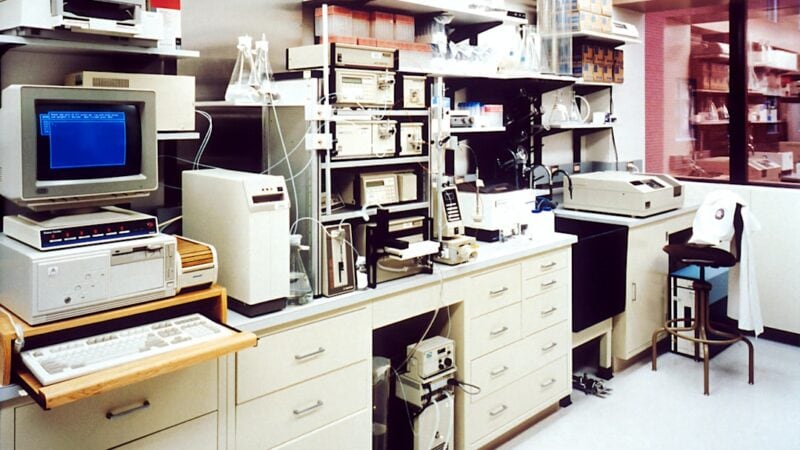Celiac Disease Diet: Foods to Eat and Avoid

Celiac disease is a chronic autoimmune disorder that affects the small intestine and is triggered by the consumption of gluten. Gluten is a protein found in wheat, barley, and rye, and it can cause damage to the lining of the small intestine in individuals with celiac disease. This damage can lead to a variety of symptoms and complications, making it crucial for those with celiac disease to follow a strict gluten-free diet. Understanding the impact of celiac disease on diet is not only important for individuals with the condition but also for their loved ones who may need to support them in making dietary changes.
Table of Contents
Key Takeaways
- Celiac disease is an autoimmune disorder that damages the small intestine when gluten is consumed.
- A gluten-free diet is crucial for managing celiac disease and preventing long-term complications.
- Common gluten-containing ingredients and products to avoid include wheat, barley, and rye.
- Gluten-free grains and starches, such as quinoa and corn, can be used as alternatives.
- Meat, fish, and plant-based options are all protein sources that can be included in a celiac-friendly diet.
Understanding Celiac Disease: What is it and How Does it Affect Your Diet?
Celiac disease is an autoimmune disorder in which the body’s immune system mistakenly attacks the lining of the small intestine when gluten is consumed. This attack causes inflammation and damage to the villi, which are tiny finger-like projections that line the small intestine and help with nutrient absorption. Over time, this damage can lead to malabsorption of nutrients, resulting in various symptoms and complications.
The symptoms of celiac disease can vary widely from person to person and can include gastrointestinal issues such as diarrhea, bloating, and abdominal pain, as well as non-gastrointestinal symptoms like fatigue, joint pain, and skin rashes. Diagnosis of celiac disease typically involves a combination of blood tests to check for specific antibodies related to the condition and an intestinal biopsy to confirm the presence of damage to the small intestine.
The Importance of a Gluten-Free Diet for Celiac Disease Patients
A gluten-free diet is currently the only treatment for celiac disease. Gluten is found in many common foods, including bread, pasta, cereals, and baked goods. It is also present in less obvious sources such as sauces, dressings, and processed foods. For individuals with celiac disease, consuming even small amounts of gluten can trigger an immune response and cause damage to the small intestine.
Following a gluten-free diet is crucial for those with celiac disease to prevent symptoms and complications. By eliminating gluten from their diet, individuals with celiac disease can allow their small intestine to heal and improve their overall health. A gluten-free diet can also help reduce the risk of developing other autoimmune disorders, such as type 1 diabetes and thyroid disease, which are more common in individuals with celiac disease.
Foods to Avoid: Common Gluten-Containing Ingredients and Products
When following a gluten-free diet, it is important to be aware of common gluten-containing ingredients and products. Some of the most common sources of gluten include wheat, barley, and rye. This means that foods like bread, pasta, and cereals made from these grains should be avoided. Other ingredients that may contain gluten include malt, modified food starch, and hydrolyzed vegetable protein.
Reading labels carefully is essential when trying to identify hidden sources of gluten. Some products may be labeled as “gluten-free,” but it is still important to check the ingredient list for any potential sources of gluten. Additionally, cross-contamination can occur in manufacturing facilities or during food preparation, so it is important to look for products that are certified gluten-free or produced in dedicated gluten-free facilities.
Gluten-Free Grains and Starches: Alternatives to Wheat, Barley, and Rye
While wheat, barley, and rye are off-limits on a gluten-free diet, there are many other grains and starches that can be enjoyed. Some popular gluten-free grains include rice, corn, quinoa, millet, and oats (if they are certified gluten-free). These grains can be used as alternatives in recipes that call for wheat or other gluten-containing grains.
In addition to grains, there are also several starches that are naturally gluten-free. These include potato starch, tapioca starch, and arrowroot starch. These starches can be used as thickeners in sauces and soups or as a coating for fried foods.
It is important to note that while these grains and starches are gluten-free, they still need to be prepared and stored in a way that prevents cross-contamination with gluten-containing ingredients. It is also important to ensure that any packaged or processed products made with these grains are certified gluten-free.
Protein Sources for a Celiac-Friendly Diet: Meat, Fish, and Plant-Based Options

Protein is an essential nutrient for overall health, and there are many naturally gluten-free sources of protein that can be enjoyed on a celiac-friendly diet. Meat, fish, and poultry are all naturally gluten-free and can be prepared in a variety of ways. Plant-based protein sources such as beans, lentils, tofu, and tempeh are also gluten-free options.
When choosing meat or poultry products, it is important to check for any added ingredients or seasonings that may contain gluten. Some processed meats, such as sausages or deli meats, may contain gluten as fillers or binders. It is best to choose fresh cuts of meat or poultry and season them with gluten-free ingredients.
For plant-based protein sources, it is important to ensure that any packaged or processed products are labeled as gluten-free. Some vegetarian or vegan products may contain gluten as a binder or filler. It is also important to note that some individuals with celiac disease may have additional dietary restrictions, such as lactose intolerance or soy allergies, which can impact their choices for protein sources.
Dairy and Celiac Disease: Tips for Choosing Safe and Nutritious Products
Dairy products can be a valuable source of calcium and other nutrients in a celiac-friendly diet. However, some individuals with celiac disease may also have lactose intolerance or be sensitive to dairy products. It is important to choose dairy products that are both gluten-free and suitable for individual dietary needs.
Most plain dairy products, such as milk, yogurt, and cheese, are naturally gluten-free. However, flavored or processed dairy products may contain gluten as additives or flavorings. It is important to read labels carefully and choose products that are labeled as gluten-free.
For individuals who are lactose intolerant or prefer to avoid dairy, there are many non-dairy alternatives available. These include almond milk, coconut milk, rice milk, and soy milk. It is important to choose non-dairy alternatives that are also labeled as gluten-free to ensure they do not contain any hidden sources of gluten.
Fruits and Vegetables: Nutrient-Rich Options for a Gluten-Free Diet
Fruits and vegetables are naturally gluten-free and provide a wide range of essential nutrients. They are an important part of a celiac-friendly diet and should be included in meals and snacks on a regular basis.
Fruits and vegetables are rich in vitamins, minerals, fiber, and antioxidants. They can help support overall health and reduce the risk of chronic diseases such as heart disease and certain types of cancer. Including a variety of fruits and vegetables in the diet can help ensure a well-rounded intake of nutrients.
When choosing fruits and vegetables, it is best to opt for fresh or frozen options rather than canned or processed varieties. Canned fruits and vegetables may contain added ingredients or sauces that could contain gluten. It is also important to wash fresh produce thoroughly to remove any potential cross-contamination from gluten-containing surfaces.
Snacks and Desserts: Gluten-Free Treats to Satisfy Your Sweet Tooth
Following a gluten-free diet doesn’t mean giving up on snacks and desserts. There are many delicious gluten-free options available that can satisfy your sweet tooth without compromising your health.
Some popular gluten-free snacks include rice cakes, popcorn, nuts and seeds, and gluten-free granola bars. These snacks can be enjoyed on their own or paired with other ingredients to create a more substantial snack.
When it comes to desserts, there are many gluten-free alternatives to traditional baked goods. Gluten-free flours such as almond flour, coconut flour, and rice flour can be used in place of wheat flour in recipes. There are also many gluten-free baking mixes and pre-made desserts available in stores.
It is important to note that while these snacks and desserts may be gluten-free, they should still be consumed in moderation as part of a balanced diet. Some gluten-free products may be higher in sugar or unhealthy fats, so it is important to read labels and choose healthier options whenever possible.
Eating Out with Celiac Disease: Tips for Navigating Menus and Staying Safe
Eating out can be challenging for individuals with celiac disease due to the risk of cross-contamination and hidden sources of gluten. However, with some careful planning and communication, it is possible to enjoy a safe and delicious meal at a restaurant.
When choosing a restaurant, it is best to opt for establishments that are knowledgeable about celiac disease and have protocols in place to prevent cross-contamination. Many restaurants now offer gluten-free menus or have staff members who are trained in handling gluten-free orders.
When dining out, it is important to communicate your dietary needs to the server or chef. Ask questions about how dishes are prepared and if any gluten-containing ingredients are used. It may also be helpful to explain the severity of your condition and the importance of avoiding cross-contamination.
If you are unsure about the safety of a particular dish or restaurant, it may be best to choose a simpler option such as grilled meat or fish with steamed vegetables. These types of dishes are less likely to contain hidden sources of gluten.
Gluten-Free Cooking and Meal Planning: Strategies for a Healthy and Delicious Diet
Cooking and meal planning can be a fun and creative way to embrace a gluten-free diet. With some simple strategies, it is possible to create delicious and nutritious meals that are safe for individuals with celiac disease.
One of the key strategies for gluten-free cooking is to focus on whole, unprocessed foods. This means choosing fresh fruits and vegetables, lean proteins, and gluten-free grains and starches. By starting with these basic ingredients, you can create a wide variety of meals that are naturally gluten-free.
Another important strategy is to plan ahead and prepare meals in advance. This can help save time and ensure that you always have safe and nutritious options available. Batch cooking and freezing meals can be especially helpful for busy individuals or families.
Experimenting with different flavors and cuisines can also make gluten-free cooking more enjoyable. There are many gluten-free recipes available online or in cookbooks that can provide inspiration for new dishes. Trying out different spices, herbs, and cooking techniques can help add variety to your meals.
In conclusion, understanding the impact of celiac disease on diet is crucial for individuals with the condition and their loved ones. Following a strict gluten-free diet is the only treatment for celiac disease and can help prevent symptoms and complications. By avoiding gluten-containing ingredients and products, individuals with celiac disease can improve their overall health and well-being.
There are many delicious and nutritious options available for those following a gluten-free diet. By focusing on whole, unprocessed foods such as fruits, vegetables, lean proteins, and gluten-free grains, it is possible to create balanced meals that are safe and enjoyable.
While there may be challenges when it comes to eating out or cooking at home, with some careful planning and communication, it is possible to navigate menus and create delicious gluten-free meals. Embracing a healthy and delicious gluten-free diet can help individuals with celiac disease live a full and satisfying life.
If you’re looking for more information on managing Celiac Disease through diet, you may find this article on “Celiac Disease Risk Factors and Complications” helpful. It discusses the various factors that can increase the risk of developing Celiac Disease and the potential complications associated with the condition. Understanding these risk factors and complications can help individuals with Celiac Disease make informed decisions about their diet and overall health. For more insights on managing Celiac Disease, you can also check out this article on the “Top 10 Best Probiotics for Celiac Disease.” It provides a comprehensive list of probiotic supplements that can support gut health and alleviate symptoms associated with Celiac Disease.
FAQs
What is celiac disease?
Celiac disease is an autoimmune disorder in which the consumption of gluten triggers an immune response that damages the small intestine.
What is gluten?
Gluten is a protein found in wheat, barley, and rye.
What are the symptoms of celiac disease?
Symptoms of celiac disease include abdominal pain, bloating, diarrhea, constipation, fatigue, and weight loss.
What foods should be avoided on a celiac disease diet?
Foods that contain gluten should be avoided on a celiac disease diet. This includes wheat, barley, rye, and any foods made with these grains.
What foods can be eaten on a celiac disease diet?
Foods that are naturally gluten-free can be eaten on a celiac disease diet. This includes fruits, vegetables, meats, fish, poultry, dairy products, and grains such as rice, corn, and quinoa.
Are there any gluten-free alternatives to wheat flour?
Yes, there are many gluten-free alternatives to wheat flour, including rice flour, almond flour, coconut flour, and potato flour.
Is it necessary to follow a strict gluten-free diet if you have celiac disease?
Yes, it is necessary to follow a strict gluten-free diet if you have celiac disease in order to prevent damage to the small intestine and other health complications.






